
The Oosterscheldekering, between the islands Schouwen-Duiveland and Noord-Beveland, is the largest of the Delta Works, a series of dams and storm surge barriers, designed to protect the Netherlands from flooding from the North Sea. The construction of the Delta Works was a response to the widespread damage and loss of life in the North Sea flood of 1953.

The Waterways Experiment Station (WES) is a United States Army Corps of Engineers research campus in Vicksburg, Mississippi. The 673-acre (272 ha) campus hosts the headquarters of the Engineer Research and Development Center (ERDC) and four of its seven laboratories. Congress authorized the research complex in 1929 to develop flood control methods on the Mississippi River, as part of the Mississippi River and Tributaries Project. Subsequent research delved into topics, including coastal engineering, dredging, weapons effects, and geotechnical engineering.

Rijkswaterstaat, founded in 1798 as the Bureau voor den Waterstaat and formerly translated to Directorate General for Public Works and Water Management, is a Directorate-General of the Ministry of Infrastructure and Water Management of the Netherlands. Its role is the practical execution of the public works and water management, including the construction and maintenance of waterways and roads, and flood protection and prevention. The agency was also involved in the construction of big railway projects such as the Betuweroute and the HSL-Zuid.

Theodor Christoph Heinrich Rehbock was a German hydraulics engineer, and professor at the University of Karlsruhe.
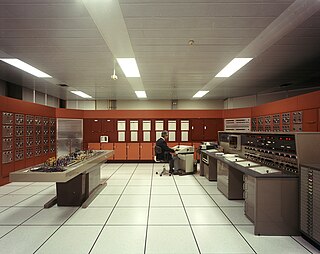
The Deltar was an analogue computer used in the design and execution of the Delta Works from 1960 to 1984. Originated by Johan van Veen, who also built the initial prototypes between 1944 and 1946, its development was continued by J.C. Schönfeld and C.M. Verhagen after van Veen's death in 1959.
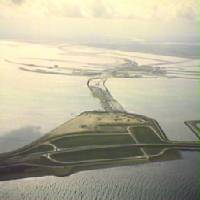
The Philipsdam is a compartmentalisation dam constructed as part of the Delta Works in the Netherlands. It separates water of the lakes Krammer and Volkerak from the Oosterschelde, and connects the Grevelingendam to Sint Philipsland.
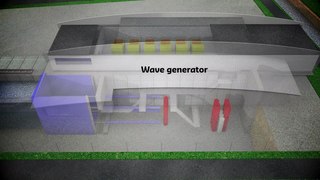
Delta Flume is a 300 meter long man-made flume with a wave generator that is capable of producing waves as tall as five meters, the world's largest artificial waves. It is located at the Deltares Research Institute outside the city of Delft, Netherlands. It is used to simulate forces generated by natural waves in order to test materials used in the construction of dykes. Especially for testing the effect of vegetation the full scale testing is essential.
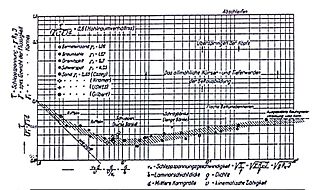
The Shields formula is a formula for the stability calculation of granular material in running water.
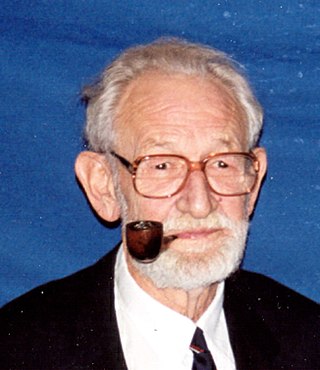
Eco Wiebe Bijker was a Dutch civil engineer and Professor of Coastal engineering at Delft University of Technology from 1968 until his retirement in 1989.

The Volkerakdam or Volkerakwerken is the name given to a group of hydraulic engineering structures located between Goeree-Overflakkee and North Brabant in The Netherlands. The works are not a single dam, but are composed of three distinct structures: a dam between Goeree-Overflakkee and Hellegatsplein, a series of locks from Hellegatsplein to North Brabant, and a bridge from Hellegatsplein to Hoekse Waard. The works cross three separate bodies of water: the Haringvliet, Hollands Diep and Volkerak. The works together comprise the fifth project of the Delta Works.

Pieter Jacobus (P.J.) Wemelsfelder was a Dutch hydraulic engineer who made significant contributions to the field of hydrometry in the Netherlands, and in hydraulic engineering internationally. In addition to his involvement in the design and planning of the Delta Works, he published widely and is notable for the first use of probability theory in the design of flood levels.
Jo Johannis Dronkers was a Dutch mathematician who is notable for the development of mathematical methods for the calculation of tides and tidal currents in estuaries. His work formed much of the mathematical basis for the design of the Delta Works. He attended the 1954 International Congress of Mathematicians in Amsterdam, where his work was discussed by David van Dantzig.

Johannes Theodoor Thijsse was a Dutch hydraulic engineer who made significant contributions to hydraulic engineering both in The Netherlands and internationally. In addition to having a major involvement in the design and planning of both the Zuiderzee Works and the Delta Works, he published widely and played a key role in the establishment of the IHE Delft Institute for Water Education.
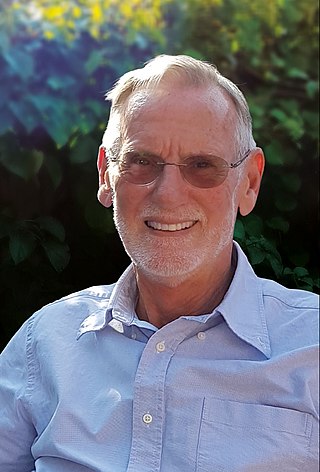
Frank Spaargaren was a Dutch hydraulic engineer who was one of the main designers of the Oosterscheldekering and served as a director of the Waterloopkundig Laboratorium in Delft.
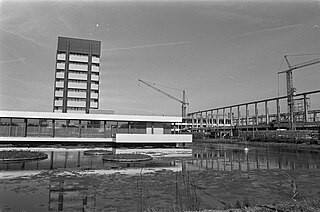
The Waterloopkundig Laboratorium was an independent Dutch scientific institute specialising in hydraulics and hydraulic engineering. The laboratory was established in Delft from 1927, moving to a new location in the city in 1973. The institute later became known as WL | Delft Hydraulics. In 2008, the laboratory was incorporated into the international nonprofit Deltares institute.

Pieter Philippus Jansen was a Dutch civil engineer and hydraulic engineer who made significant contributions to hydraulic engineering in The Netherlands. He spent the majority of his career with Rijkswaterstaat, working on several major projects including the first phase of the Delta Works and leading the reclamation and repair efforts following the inundation of Walcheren.

Jan Fokke Agema was a Dutch hydraulic engineer and professor at Delft University of Technology. He is notable for his design of the harbour entrance at Hoek van Holland and involvement in the construction of the Oosterscheldekering. The prof. dr.ir. J.F. Agemaprijs is named for him, and has been awarded every five years since 2000.
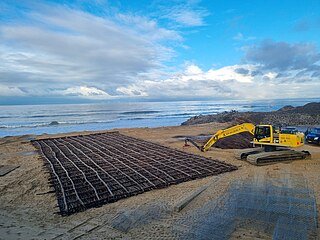
A fascine mattress(Dutch: Zinkstuk, literally sink piece), is a large woven mat made of brushwood, typically willow twigs and shoots, used to protect riverbeds and other underwater surfaces from scour and erosion. They are similar in construction to a fascine, but are primarily used for hydraulic engineering works, typically to strengthen the banks of rivers and streams, as well as coastal structures like revetments and groynes.
Emmericus Carel Willem Adriaan "Wim" Geuze was a Dutch civil engineer who contributed to the development of soil mechanics, and the founding of the geotechnical engineering journal, Géotechnique. He was head of research at the Laboratorium voor Grondmechanica in Delft, and professor of soil mechanics at Delft University of Technology and the Rensselaer Polytechnic Institute.
Albert Sybrandus Keverling Buisman was a Dutch civil engineer and Professor of Applied Mechanics, who was instrumental in establishing the Laboratorium voor Grondmechanica in Delft. He made notable contributions to the development of soil mechanics in the Netherlands.


















